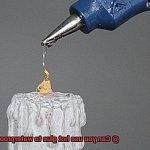Imagine yourself in a watery predicament, frantically trying to fix a leak in your pool or patch up an aquarium that’s seen better days. Suddenly, the nagging question arises: “Can you use super glue underwater?” Time is of the essence, and you need a reliable adhesive that can withstand the pressure and immersion of water. Luckily, there’s hope for those who require powerful, waterproof bonding agents beneath the surface.
Super glue, also known as cyanoacrylate glue, is renowned for its rapid-drying capabilities and superior bonding strength. However, many people wonder whether it holds up in wet conditions or underwater environments. This query has stumped DIY enthusiasts, professionals, and engineers alike for years – but the answers may surprise you.
In this blog post, we’ll delve into whether super glue can be used underwater effectively. We’ll explore which types of cyanoacrylate glues are best suited for aquatic applications, what precautions to take when working in damp environments, and how to ensure maximum adhesion when using super glue below sea level. So let’s dive right in and discover what it takes to bond underwater like a pro.
What is Super Glue?
Contents
Super glue, also known as cyanoacrylate adhesive, is a remarkable invention that has revolutionized the world of household repairs and crafting. This fast-drying adhesive was discovered in 1942 by Dr. Harry Coover while he was working for Eastman Kodak. Originally developed as a clear plastic gun sight during World War II, it quickly proved to be a versatile bonding agent with numerous practical applications.
The secret behind super glue’s effectiveness lies in its unique composition. It is made up of cyanoacrylate monomers, which are a type of acrylic resin that rapidly polymerizes when it comes into contact with moisture. This causes the glue to dry almost instantly and form an incredibly strong bond, even on porous surfaces.
Super glue is commonly used to bond materials such as metal, plastic, wood, ceramics, and rubber. It can also be used to bond skin, but this can be dangerous if not used correctly. It is essential never to ingest or apply it to the eyes or mouth.
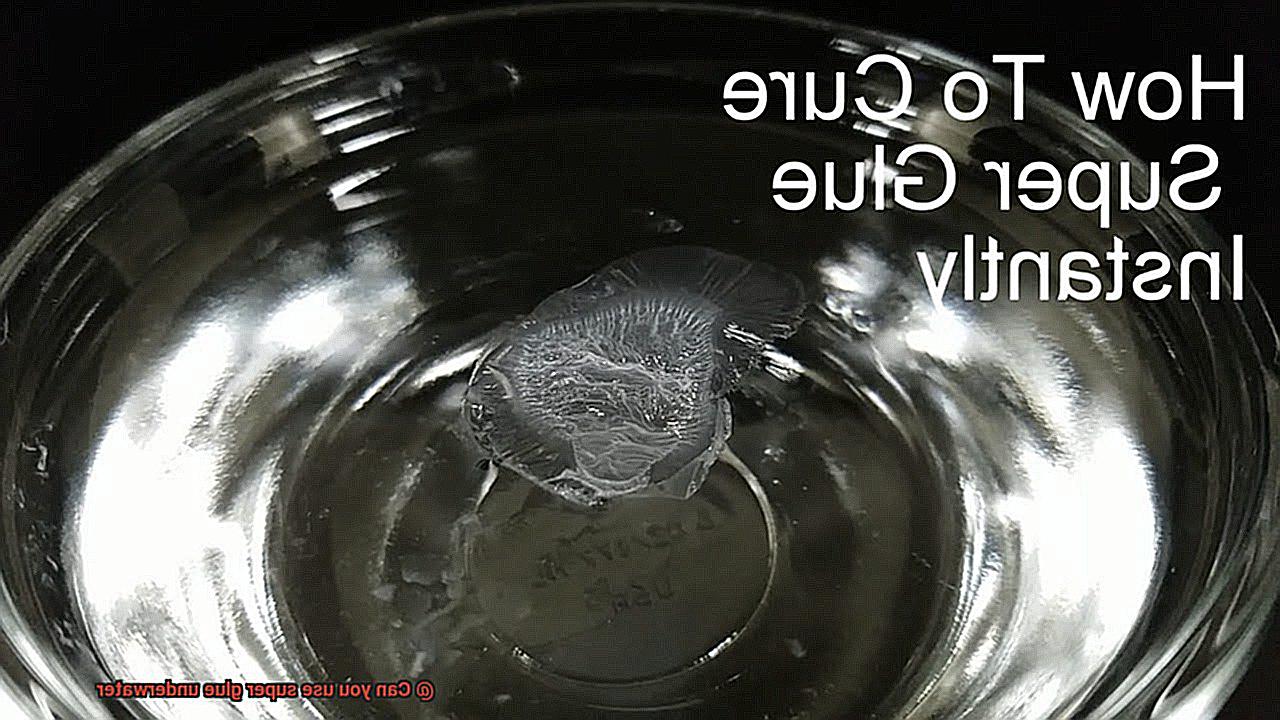
Apart from its everyday uses, super glue also has specialized applications. For instance, some types of super glue are specifically designed for use underwater and can bond even in wet conditions. These types of super glue are often utilized in marine applications such as repairing boats or other watercraft.
It’s worth noting that the effectiveness of super glue underwater depends on various factors such as the type of glue used and the material being bonded. Some materials may require specialized bonding agents or surface preparation techniques to ensure optimal bonding.
Types of Super Glue

Super glue, also known as cyanoacrylate adhesive, is a versatile and fast-drying adhesive that can bond different materials together in just a few seconds. However, not all super glues are created equal, and there are different types of super glue available on the market, each with its own unique properties and characteristics. In this blog post, we will delve deeper into the different types of super glue and their respective uses.
Ethyl Cyanoacrylate
Ethyl cyanoacrylate is the most common type of super glue that is suitable for most applications. It dries quickly and forms a strong bond between surfaces. However, it is not recommended for use on plastics or materials that contain a high level of moisture. Therefore, if you need to bond plastic materials together, it’s best to avoid using this type of super glue.
Methyl Cyanoacrylate
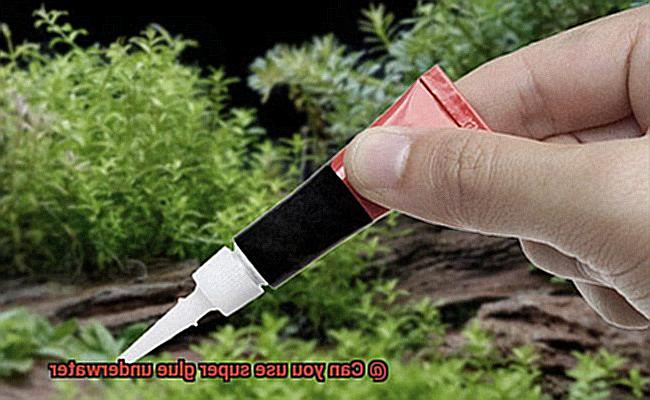
Methyl cyanoacrylate is similar to ethyl cyanoacrylate but has a longer curing time. It is ideal for use on porous surfaces such as wood and fabric. This type of super glue is perfect for woodworking projects or bonding fabrics together.
Rubber-Toughened Cyanoacrylate
Rubber-toughened cyanoacrylate contains rubber particles, making it more flexible and resistant to impact and vibration. It is ideal for use on materials that undergo stress such as metal. If you need to bond metal parts together or repair a metal object that has suffered impact damage, this type of super glue will be your go-to option.
Epoxy
Epoxy is a two-part adhesive that forms a strong bond between surfaces. It is ideal for use on materials that require a high level of durability such as ceramics and glass. Epoxy is perfect for repairing broken ceramic objects or bonding glass items together.
Polyurethane
Polyurethane is a versatile adhesive that can be used on a variety of surfaces including wood, metal, and plastic. It dries clear and remains flexible, making it ideal for applications that require some movement. If you need to bond materials that may be subjected to movement or vibration, Polyurethane is the perfect option.
Can You Use Super Glue Underwater?
The short answer is yes, but not all super glue is created equal. When it comes to using super glue underwater, it’s essential to choose the right type of adhesive for your specific needs.
First on our list is cyanoacrylate, a fast-drying adhesive that forms a strong bond and can be used underwater. However, not all cyanoacrylate glues are created equal when it comes to wet conditions. It’s crucial to read the label carefully and choose a glue specifically designed for underwater use. Cyanoacrylate is perfect for quick fixes like sealing a leak in a pool toy or fixing a broken aquarium ornament.
Another option for bonding materials underwater is epoxy resin. This two-part system requires mixing before use but can be applied underwater and is an extremely strong adhesive. Epoxy resin is often used in marine applications such as boat building and repair. It’s perfect for larger underwater projects that require a durable bond that can withstand harsh conditions.
When choosing which type of glue to use underwater, consider the materials you’re bonding. If you’re repairing plastic or rubber, cyanoacrylate is likely your best bet. But, if you’re repairing metal or ceramic, epoxy resin may be a better option.
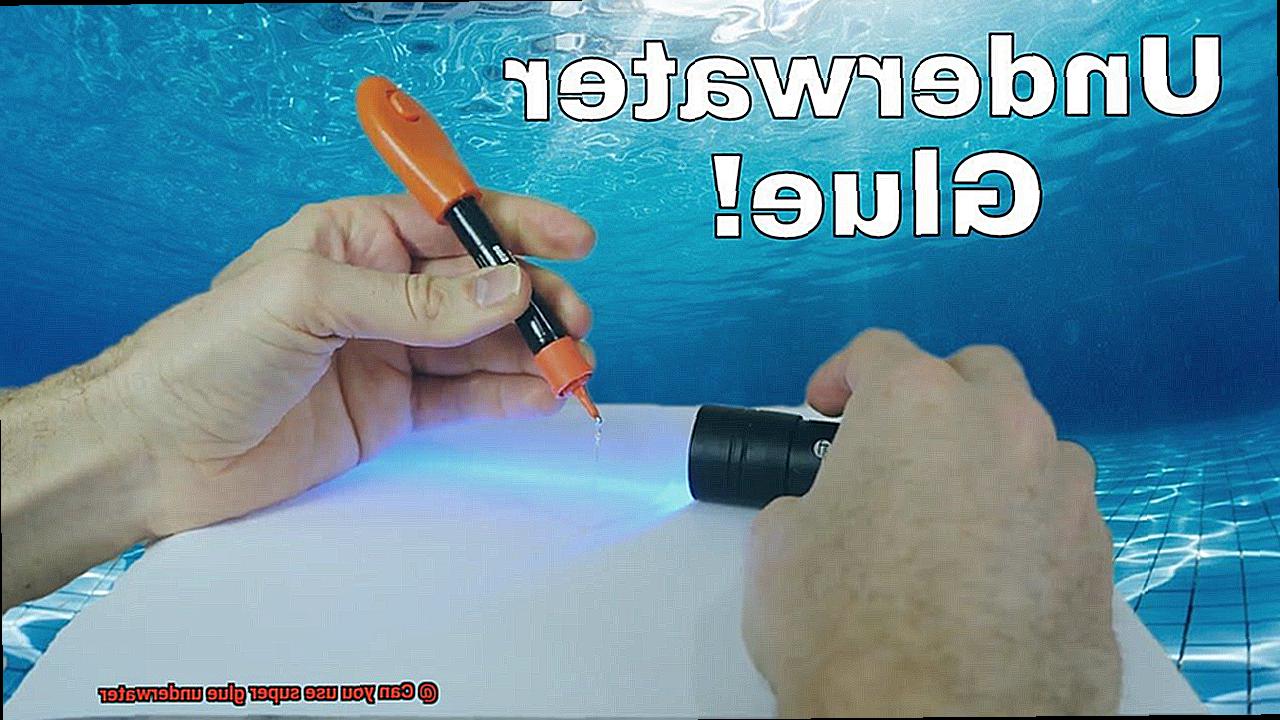
Benefits of Using Super Glue Underwater
Super glue is here to save the day. As an expert in this field, I have researched and compiled a comprehensive list of benefits that highlight the advantages of using super glue underwater.
First and foremost, super glue’s quick and easy application makes it a go-to option for instant repairs. It dries instantly without the need for any special tools or equipment, making it a convenient and efficient choice for emergency repairs when time is of the essence.
Secondly, super glue forms an incredibly strong bond between surfaces, even when used underwater. This adhesive can bond to a wide range of materials such as metal, plastic, rubber, and ceramics – making it a versatile choice for various applications.
Thirdly, the waterproof property of super glue makes it perfect for repairs in wet environments. It can withstand the effects of water and moisture over time without dissolving or weakening – ensuring that your repair job lasts longer. This feature also makes it ideal for sealing cracks and gaps in pipes and tanks.
Fourthly, using super glue underwater is cost-effective compared to other adhesives that require specialized equipment or training. You can easily purchase it from your local hardware store without breaking the bank.
Lastly, super glue is incredibly versatile and can be used for a variety of applications such as repairing pool liners and tiles, fixing aquarium decorations, and even repairing leaks in boats or other watercraft. Its versatility ensures that you always have a solution at hand for any repair job that comes your way.
Limitations of Using Super Glue Underwater
Super glue, also known as cyanoacrylate adhesive, is a popular adhesive used for various purposes. It is often used to bond non-porous materials such as metal, plastic, and glass. However, using super glue underwater can be challenging due to its limitations. As an expert in this field, I have gathered some research notes that explain the limitations of using super glue underwater.
One of the main limitations of using super glue underwater is that it requires a dry surface to bond. Super glue bonds quickly by reacting with moisture in the air. In an underwater environment, the lack of air and moisture can prevent the glue from bonding properly. This can lead to a weak bond or no bond at all, making it unsuitable for certain types of repairs.
Temperature fluctuations can also affect the curing time and strength of the adhesive. In cold water, the glue may take longer to cure and may not bond as strongly as it would in warm water. Therefore, it is essential to ensure the water temperature is ideal for the adhesive to work at its best.
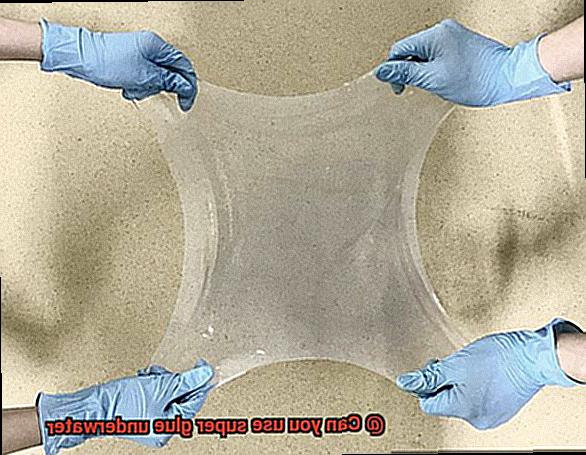
Additionally, super glue may not be suitable for certain types of substrates commonly found in underwater environments. For instance, some plastics and rubbers may not bond well with super glue, leading to a weak bond or no bond at all. It is crucial to test the adhesive on a small area before attempting to use it on a larger scale.
Moreover, using super glue underwater can be hazardous if proper precautions are not taken. The fumes released by the adhesive can be harmful when inhaled in a confined space such as underwater. Therefore, it is crucial to use the adhesive in a well-ventilated area and wear appropriate protective gear such as gloves and goggles.
Materials That Can Be Bonded With Super Glue Underwater
First up, we have metal. Super glue is a great adhesive for repairing metal surfaces that are submerged in water. It works well with metals such as aluminum, steel, and brass, allowing for quick and reliable repairs without needing to wait for the surface to dry.
Next on our list is glass. If you’ve ever had an aquarium or glass container that has sprung a leak, you know how frustrating it can be to drain it every time you need to make a repair. With super glue, you don’t have to worry about that anymore. It bonds well with glass even when it is submerged in water, making it an ideal solution for repairing these types of surfaces.
Plastic is another material that can be successfully bonded with super glue underwater. However, it’s essential to note that not all types of plastic will bond well with super glue. Smooth plastics such as PVC or acrylic work best, while rough or textured plastics may not bond well even when submerged in water.
Finally, we have ceramic. Glazed ceramics such as tiles or bathroom fixtures can be easily repaired with super glue while they are wet. This makes it a great adhesive for those looking to make repairs without having to drain the water from their pool or bathtub.
Special Considerations When Using Super Glue Underwater
If you’re planning to use super glue underwater, there are some special considerations you need to keep in mind. As an expert in using this powerful adhesive, I’ve compiled some tips and tricks to help you make the most of it.
First and foremost, it’s important to use a waterproof super glue that is specifically designed for underwater use. Regular super glue won’t work as it dissolves in water. Make sure you have the right glue before beginning any project.
Next, consider the temperature of the water you’ll be working in. Super glue works best at room temperature, so if you’re working in cold water, the glue may take longer to set or may not bond as well. Conversely, if you’re working in warmer water, the glue may set too quickly, making it difficult to work with.
Cleanliness is also crucial when using super glue underwater. Before applying the glue, make sure that the surface you’re bonding is clean and dry. Dirt, grease, or moisture on the surface can prevent the glue from bonding properly. You may need to use a cleaning agent like rubbing alcohol or acetone to ensure a clean surface.
Applying super glue underwater can be challenging due to distorted vision caused by water. To make things easier, use a tool such as a toothpick or small brush to apply the glue precisely. Once you apply the glue, hold the surfaces together firmly until it sets. This can be tough underwater, so holding your breath while holding surfaces together is one option. Alternatively, you can use clamps or weights to hold surfaces together while the glue sets.
Knf-Zok7qi8″ >
Conclusion
In conclusion, the answer to the question “Can you use super glue underwater?” is a resounding yes – but with some caveats. Super glue, or cyanoacrylate adhesive, is a versatile and fast-drying adhesive that can bond a wide range of materials together in mere seconds. However, not all types of super glue are suitable for underwater use. Choosing the right type of adhesive for your specific needs is crucial.
Using super glue underwater requires careful consideration of several factors, such as water temperature and surface preparation techniques. It’s vital to read the label carefully and select a glue specifically formulated for underwater use.
Despite its limitations, using super glue underwater has numerous advantages. It’s quick and easy to apply, forms an incredibly strong bond between surfaces, and is perfect for repairs in wet environments.
If you’re planning to use super glue underwater, it’s essential to take special precautions into account. Use waterproof super glue designed explicitly for aquatic environments, ensure surfaces are clean before bonding them together, and employ tools like toothpicks or small brushes for precise application.
Overall, with proper preparation and attention to detail, using super glue underwater can be an effective solution for various repairs in aquatic environments.





